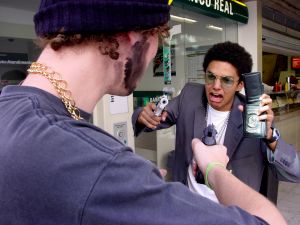*3 In 2010, the Supreme Court issued its opinion in Padilla v. Kentucky, — U.S. —-, 130 S.Ct. 1473, 176 L.Ed.2d 284 (2010), in which it explained a criminal defense attorney’s duty to advise his client about the potential immigration consequences of a plea. In that case, Padilla pleaded guilty to an offense that subjected him to automatic deportation. The Supreme Court recognized that immigration law is complex and stated that when “the deportation consequences of a particular plea are unclear or uncertain … a criminal defense attorney need do no more than advise a noncitizen client that pending criminal charges may carry a risk of adverse immigration consequences.” Id. at 1483. But the Court also held that “when the deportation consequence is truly clear, the duty to give correct advice is equally clear.” Id. The Court held that “constitutionally competent counsel would have advised [Padilla] that his conviction … made him subject to automatic deportation.” Id. at 1478, 1486-87. Because counsel did not so advise Padilla, the Court concluded that counsel was not constitutionally competent and that Padilla satisfied the first prong of Strickland. Id.; see Ex parte Martinez, No. PD-1338-11, 2012 WL 1868492, at *4-5 (Tex.Crim.App. May 16, 2012) (not designated for publication) (when deportation and exclusion from this country are automatic consequences of a guilty plea, it is not enough to advise noncitizen client that he faces the possibility of deportation or exclusion).
It is undisputed that a conviction for an aggravated felony results in automatic deportation or exclusion from the country. 8 U .S.C. § 1227(a)(2)(A)(iii) (2005) (stating that an alien “admitted to the United States shall, upon the order of the Attorney General, be removed if the alien is … convicted of an aggravated felony”); see Martinez, 2012 WL 1868492, at *4. It is also undisputed that the offense of assault of a public servant is an aggravated felony for federal immigration law purposes. See 8 U .S.C. § 1101(a)(43) (stating that a “crime of violence” is an aggravated felony); 18 U.S.C. § 16(a) (2000) (defining “crime of violence” as “an offense that has as an element the use, attempted use, or threatened use of physical force against the person or property of another”); TEX. PENAL CODE ANN. § 22.01(a) (West 2011) (defining “assault” offense to include causing or threatening to cause bodily injury to another). And it is undisputed that when a defendant is placed on deferred adjudication and some form of punishment is assessed, the deferred adjudication is a “conviction” for federal immigration law purposes. Martinez, 2012 WL 1868492, at *4 (citing 8 U.S.C. § 1101(a)(48)(A)).
Because the immigration consequences of a guilty plea to the assault offense in this case were clear, counsel’s duty under Padilla and Martinez was to give Olvera clear advice about those consequences. See Padilla, 130 S.Ct. at 1478, 1486-87; Martinez, 2012 WL 1868492, at *4-5; Moody, 991 S.W.2d at 858. The record supports Olvera’s argument that counsel did not satisfy his duty to give adequate advice about the immigration consequences. Counsel testified that he told Olvera he could be deported or denied reentry into this country, not that a guilty plea would result in automatic deportation and denial of reentry. Consequently, we conclude that Olvera satisfied his burden under the first prong of Strickland to show that counsel’s performance fell below an objective standard of reasonableness. See Padilla, 130 S.Ct. at 1478, 1486-87.
 Sherman & Plano, TX Criminal Defense Lawyer Blog
Sherman & Plano, TX Criminal Defense Lawyer Blog



 Section 7.02(b) states “If, in the attempt to carry out a conspiracy to commit one felony, another felony is committed by one of the conspirators, all conspirators are guilty of the felony actually committed, though having no intent to commit it, if the offense was committed in furtherance of the unlawful purpose and was one that should have been anticipated as a result of the carrying out of the conspiracy.”
Section 7.02(b) states “If, in the attempt to carry out a conspiracy to commit one felony, another felony is committed by one of the conspirators, all conspirators are guilty of the felony actually committed, though having no intent to commit it, if the offense was committed in furtherance of the unlawful purpose and was one that should have been anticipated as a result of the carrying out of the conspiracy.” One of the most common misconceptions in the law is that one actually has to commit a crime themselves to face criminal charges. Better said, it is a misconception that a person must commit all the elements of an offense themselves to be convicted of a crime. However, old distinctions such as “accessory” and “accomplice” have been abolished under Texas law, and a person who commits a crime with the intent that it be committed can be convicted of the offense.
One of the most common misconceptions in the law is that one actually has to commit a crime themselves to face criminal charges. Better said, it is a misconception that a person must commit all the elements of an offense themselves to be convicted of a crime. However, old distinctions such as “accessory” and “accomplice” have been abolished under Texas law, and a person who commits a crime with the intent that it be committed can be convicted of the offense. The age old question about whether to consent to a DWI breath or blood test is still the question many people who socially drink and fear a DWI investigation want answered, particularly now that they read in the news that cops will forcefully draw their blood if they refuse. The answer in most situations is still “NO”, for several reasons.
The age old question about whether to consent to a DWI breath or blood test is still the question many people who socially drink and fear a DWI investigation want answered, particularly now that they read in the news that cops will forcefully draw their blood if they refuse. The answer in most situations is still “NO”, for several reasons. The base offense level for a prohibited person in possession of a firearm is relatively low. Advisory Sentencing Guideline 2k2.1 calls for a base offense level of 14 if a person is prohibited by law from firearm possession, which along with a 3 point reduction for acceptance of responsibility yields an advisory base offense level of 11. With no criminal history (category I), that is an advisory guidelines range of 8-14 months in the federal penitentiary.
The base offense level for a prohibited person in possession of a firearm is relatively low. Advisory Sentencing Guideline 2k2.1 calls for a base offense level of 14 if a person is prohibited by law from firearm possession, which along with a 3 point reduction for acceptance of responsibility yields an advisory base offense level of 11. With no criminal history (category I), that is an advisory guidelines range of 8-14 months in the federal penitentiary. My two oldest nephews and six of their friends came out and wanted to learn basketball, and drew me as their coach for better or worse. I felt bad when I was too hard on them at times (although I was too easy at others), but they all gave a ton of effort for three months and became one unit. Before our first game, only one had really experienced winning basketball to my knowledge, but by the end they had each taken part in a winning season and we had all advanced tremendously experience-wise. My defensive pride made me teach them man to man defense, which is particularly difficult at a young age due to its requirement of divided attention. In man to man, kids must master focusing on the ball and on their man, never losing sight of or position in relation to either. To see them play this defense very, very well for their age by the end of the year was a real blessing. Along with mastering other parts of the game, it showed how hard they worked and how serious they took basketball. I hope they continue to do so, as they have the foundation talent wise to be very special throughout their school years.
My two oldest nephews and six of their friends came out and wanted to learn basketball, and drew me as their coach for better or worse. I felt bad when I was too hard on them at times (although I was too easy at others), but they all gave a ton of effort for three months and became one unit. Before our first game, only one had really experienced winning basketball to my knowledge, but by the end they had each taken part in a winning season and we had all advanced tremendously experience-wise. My defensive pride made me teach them man to man defense, which is particularly difficult at a young age due to its requirement of divided attention. In man to man, kids must master focusing on the ball and on their man, never losing sight of or position in relation to either. To see them play this defense very, very well for their age by the end of the year was a real blessing. Along with mastering other parts of the game, it showed how hard they worked and how serious they took basketball. I hope they continue to do so, as they have the foundation talent wise to be very special throughout their school years. This year I had the privilege of coaching eight young men in 5th and 6th grade basketball. I thought that I would descend from the clouds and teach them everything there is to know about basketball, but I believe that I learned a whole lot more about coaching, teaching and humanity through this experience than I was probably able to give back. It was very special to see eight kids learn how to play as one unit, play for each other, and overcome adversity and the ups and downs of a serious basketball season, eventually firing on all cylinders together up and down the basketball floor. This was a special group of kids and part of a special class group at their small town school, and they will achieve big things in the future.
This year I had the privilege of coaching eight young men in 5th and 6th grade basketball. I thought that I would descend from the clouds and teach them everything there is to know about basketball, but I believe that I learned a whole lot more about coaching, teaching and humanity through this experience than I was probably able to give back. It was very special to see eight kids learn how to play as one unit, play for each other, and overcome adversity and the ups and downs of a serious basketball season, eventually firing on all cylinders together up and down the basketball floor. This was a special group of kids and part of a special class group at their small town school, and they will achieve big things in the future. The “prohibited person” statute under federal law, defining who can possess a firearm and who cannot, is pretty straight forward. You will be surprised to learn the many classes of people who cannot possess a firearm, not just convicted felons. If you meet one of these categories, it is a federal felony to possess a firearm or ammunition. I usually don’t copy and paste whole statutes, but the statutes are pretty straight forward. 18 U.S.C. 922(g) states, with the assistance of my commentary in caps and parentheses, that:
The “prohibited person” statute under federal law, defining who can possess a firearm and who cannot, is pretty straight forward. You will be surprised to learn the many classes of people who cannot possess a firearm, not just convicted felons. If you meet one of these categories, it is a federal felony to possess a firearm or ammunition. I usually don’t copy and paste whole statutes, but the statutes are pretty straight forward. 18 U.S.C. 922(g) states, with the assistance of my commentary in caps and parentheses, that: